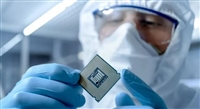
D882 microfluidic chip is a technology that can conduct fluid manipulation and experiment at micro scale, and is widely used in the biomedical field. In anti blood flow infection drug sensitivity test, microfluidic chips can provide a high-throughput, rapid and accurate drug screening platform, which is of great significance for guiding clinical drug selection and individualized treatment.
The purpose of anti bloodstream infection drug sensitivity test is to evaluate the inhibitory effect of different drugs on infectious pathogens, so as to guide clinical drug treatment selection. The traditional drug sensitivity test usually uses culture medium and cell culture method, but this method has the disadvantages of long time, large sample demand, and cumbersome operation. The microfluidic chip technology can contact drugs with infectious pathogens by controlling the fluid flow and cell/bacteria suspension in the microfluidic channel to achieve high-throughput drug screening and sensitivity testing.
The micro channel structure in the microfluidic chip can simulate human microenvironment, such as vascular lumen, tissue gap, etc., making drug testing closer to the real situation. In the anti blood flow infection drug sensitivity test, the patient's blood sample or the cultured infectious pathogen suspension can be injected into the microchannel, and then the drug can interact with the infectious pathogen by controlling the fluid flow. The inhibitory effect of drugs on infectious pathogens can be evaluated by observing the growth, survival status or changes of specific indicators of cells/bacteria.
One of the advantages of microfluidic chip is its high flux drug screening ability. Traditional drug sensitivity tests often require a large number of Petri dishes and test tubes, while microfluidic chips can conduct multiple experiments at the same time, greatly improving the efficiency of the experiment. In addition, due to the small scale of microfluidic chips, the sample size required is also small, which is particularly important in the case of limited clinical samples.
In addition, the microfluidic chip can also realize real-time monitoring and quantitative analysis. The interaction between drugs and infectious pathogens can be observed in real time by adding fluorescent probes or markers in the microchannel, so as to evaluate the inhibitory effect of drugs. At the same time, microfluidic chips can also be combined with microscope, optical detector and other equipment to achieve quantitative analysis of cells/bacteria.
However, microfluidic chips also have some challenges in drug sensitivity test of anti bloodstream infection. First of all, the preparation and operation technology of microfluidic chips is relatively complex, which requires professional technicians to operate. Secondly, the material selection and surface modification of microfluidic chips have a certain impact on the experimental results, which needs reasonable optimization and control. In addition, microfluidic chips still have some technical problems in drug delivery and fluid control, which need further research and improvement.
In a word, microfluidic chip, as a new technology platform, has broad application prospects in drug sensitivity test of anti blood flow infection. By providing a high-throughput, fast and accurate drug screening platform, microfluidic chips can help doctors guide clinical drug selection and individualized treatment, and provide important support for anti bloodstream infection drug research and development and clinical treatment. With the continuous progress of technology and the promotion of application, it is believed that microfluidic chips will play an increasingly important role in drug sensitivity tests against blood flow infections.

